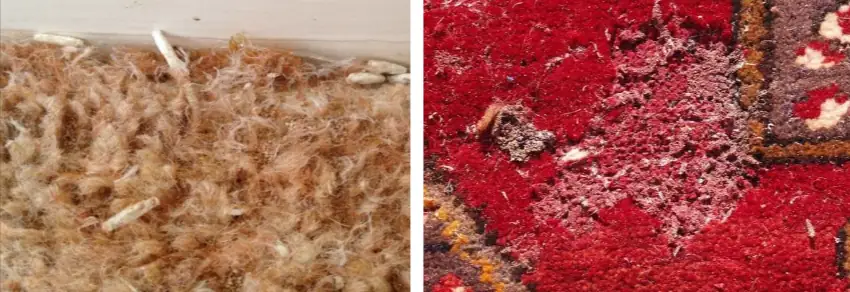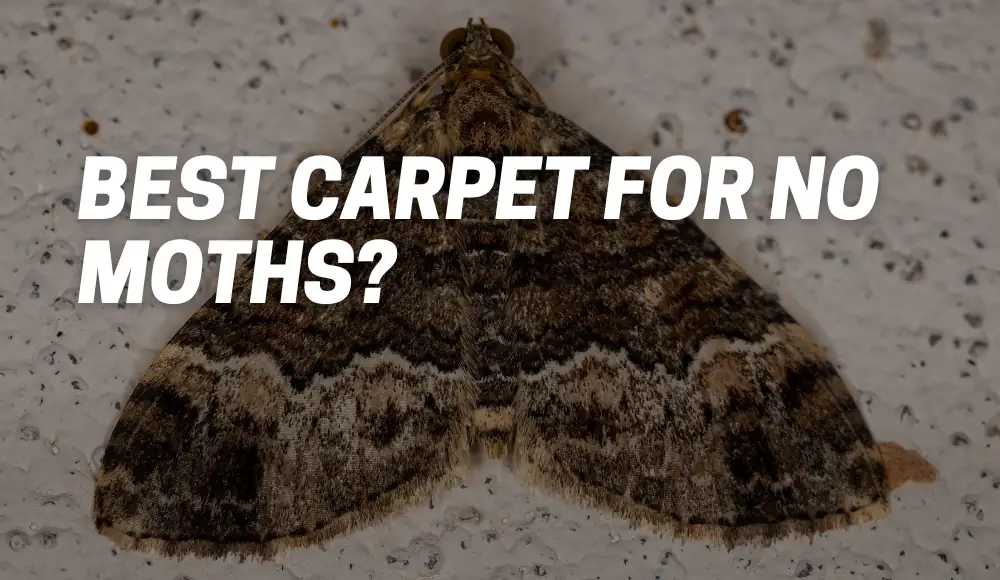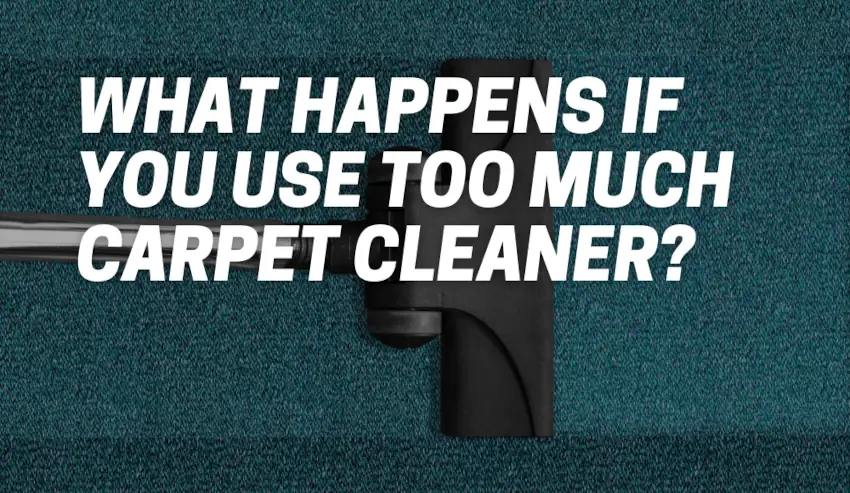Last updated on November 2nd, 2023 at 12:30 am
If you’ve ever found yourself in the unfortunate situation of dealing with those pesky carpet moths, you know just how frustrating it can be. These tiny terrors seem to appear out of nowhere, wreaking havoc on your beautiful carpets.
But fear not, for we’re here to unravel the mystery behind these unwelcome guests and explore the best carpet options to keep them at bay.
In this article, we’ll dive into the world of carpet moths, their habits, and most importantly, how you can choose a carpet that’s virtually a no-moth zone. So, let’s begin our journey into the realm of “no moths carpet” solutions!
Where Do Carpet Moths Come From?
First things first.
Carpet moths might seem like they materialize out of thin air, but in reality, they have their origins.
These sneaky insects are commonly found in dark and undisturbed areas, such as closets, under furniture, and, of course, carpets. Their life cycle begins with eggs laid near carpets, which then hatch into hungry larvae.
These larvae, often referred to as woolly bears, feast on natural fibers like wool, silk, and even fur.

Are Carpet Moths Dangerous?
While carpet moths themselves might not pose a direct threat to your health, their presence can be quite problematic.
The damage they inflict on your carpets and other textiles can be extensive and expensive to repair. Furthermore, their larvae can trigger allergies in some individuals.
So, while not physically dangerous, they can certainly wreak havoc on your living space and your wallet.
What Are the Signs of Carpet Moths?
Identifying a carpet moth infestation early is key to minimizing the damage. Keep an eye out for these telltale signs:
- Visible Damage: Look for irregular holes or patches in your carpets and rugs. These are often signs of the larvae munching away.
- Cocoons and Larvae: Spotting silky cocoons or larvae in the corners of your carpets or hidden areas is a clear indication of an infestation.
- Webbing: If you notice small patches of webbing on your carpets, it’s a sign that the larvae are busy at work.
- Adult Moths: While less common, spotting adult moths flying around your living space is a definite sign of a larger issue.
How Do I Keep Moths Out of My Carpet?
Prevention is key when it comes to keeping carpet moths at bay. Here are some tips to create a moth-proof environment:
- Regular Cleaning: Vacuum your carpets, rugs, and other textiles regularly to remove any eggs, larvae, or adult moths.
- Sunlight and Air: Moths thrive in dark and damp environments, so ensure proper ventilation and expose your carpets to sunlight whenever possible.
- Storage: Store natural fiber textiles like woolens in airtight containers or bags to prevent moths from laying eggs.
- Natural Repellents: Cedar chips, lavender sachets, or even dried orange peels can act as natural repellents against moths.
What Carpet Is Moth-Proof?
When it comes to selecting a carpet that’s resistant to moths, your best bet is to opt for synthetic fibers.
Materials like nylon, polyester, and polypropylene are far less appealing to moths than natural fibers like wool. These synthetic carpets are not only durable and easy to clean but also provide an extra layer of defense against those unwanted pests.
Do Moths Eat Polypropylene Carpet?
No, moths are far less likely to feast on polypropylene carpets. Polypropylene is a synthetic fiber that doesn’t provide the same sustenance and habitat as natural fibers. This makes it a practical choice for areas prone to moth infestations.
What Is the Best Carpet That Moths Don’t Eat?
When you’re on the hunt for the ultimate “no moths carpet,” consider nylon carpets. Nylon is a popular synthetic fiber known for its durability and resistance to pests. It’s also highly versatile in terms of design and texture, ensuring you don’t have to compromise aesthetics for practicality.
Do Moths Eat Sisal Carpet?
Sisal carpets are primarily made from natural plant fibers, making them potentially attractive to carpet moths. While moths might not have a feast on sisal like they would on wool, it’s still essential to practice preventive measures to keep these unwelcome visitors at bay.
Do Moths Eat Jute Rugs?
Jute rugs, like sisal rugs, are crafted from natural plant fibers. This can make them susceptible to moth damage. To safeguard your jute rugs, ensure proper cleaning, regular vacuuming, and consider placing them in areas less prone to moth activity.
Useful Information: Tips for Moth-Proofing Your Carpets
Here’s a quick list of tips to help you keep those moths away from your carpets:
- Vacuum your carpets and rugs regularly, paying extra attention to corners and hidden areas.
- Place natural repellents like cedar chips or lavender sachets in your closets and storage spaces.
- Ensure proper ventilation and exposure to sunlight in your living space.
- Store woolens and other natural fiber textiles in airtight containers.
- Consider synthetic fiber carpets like nylon or polypropylene for increased moth resistance.
Remember, the key to a moth-free carpet is a combination of preventive measures, regular maintenance, and choosing the right materials. By taking a proactive approach, you can enjoy your carpets without worrying about those tiny, unwanted guests.
Conclusion
The battle against carpet moths might seem daunting, but armed with knowledge and the right strategies, you can emerge victorious.
Choosing a synthetic fiber carpet, implementing preventive measures, and staying vigilant are your best allies in the quest for a “no moths carpet” haven. So go ahead, make an informed decision, and bid farewell to those pesky intruders once and for all!



